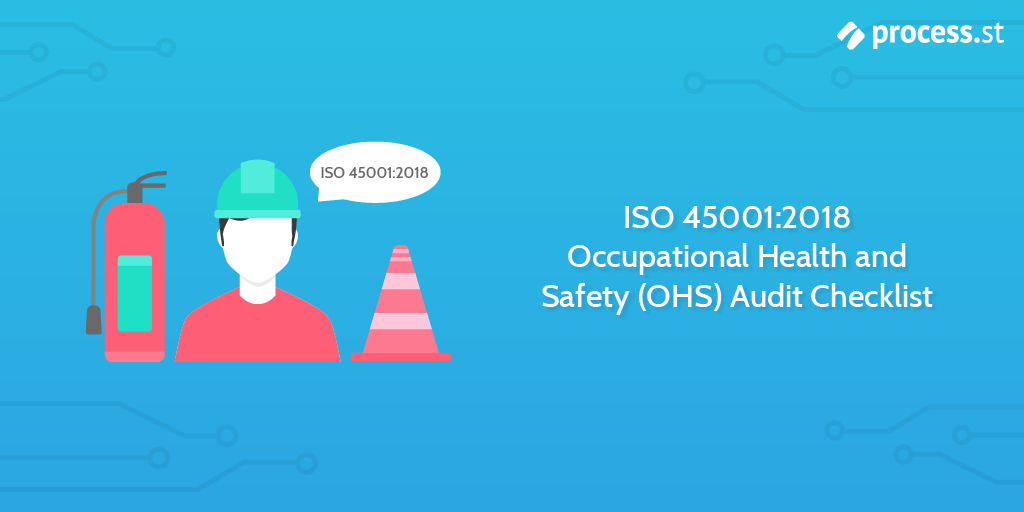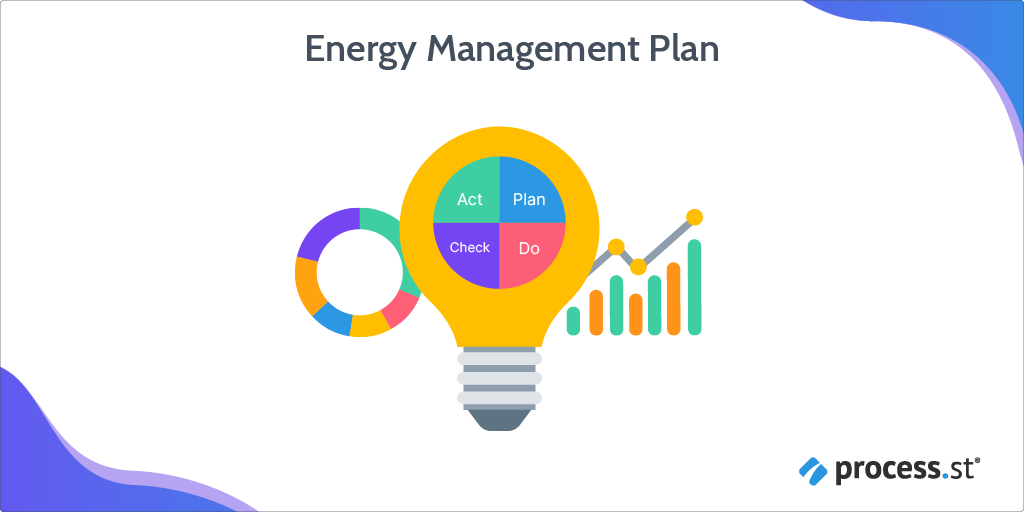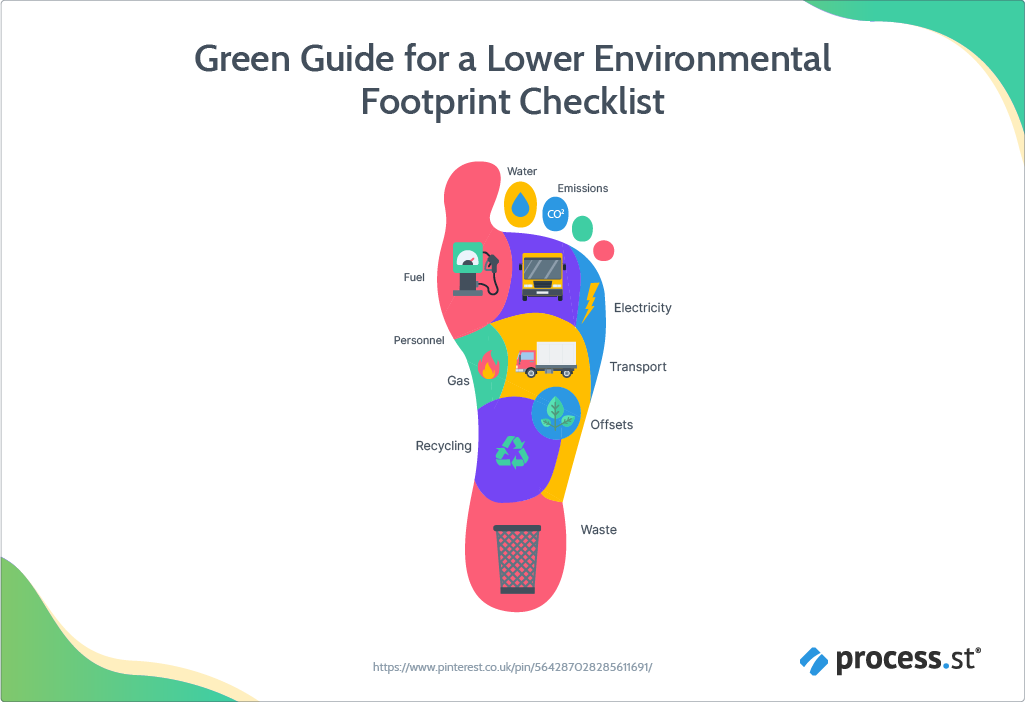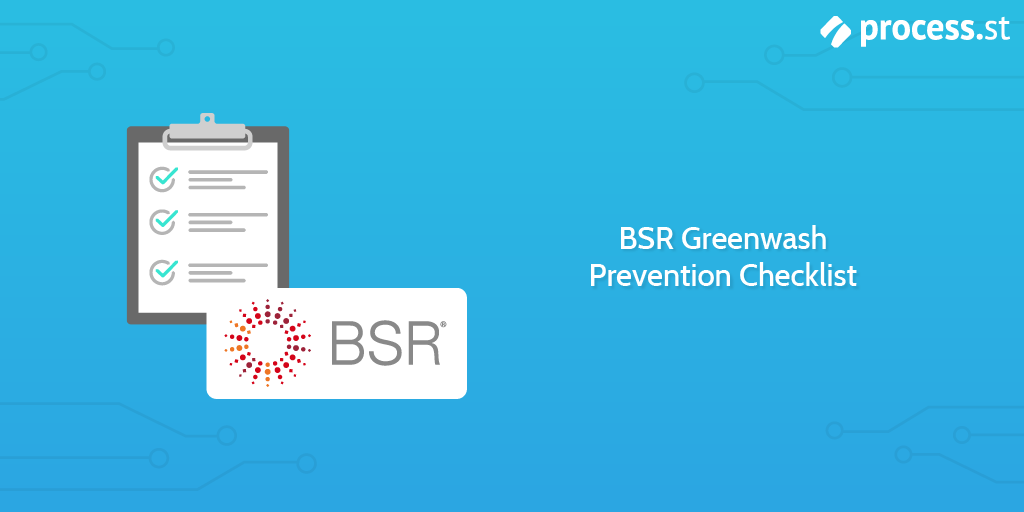Context of the organization
Understanding of the OHSMS and its context
Internal issues: {{form.Internal_issues_information}}
External issues: {{form.External_issues_information}}
Relevant interested parties: {{form.Relevant_interested_parties_information}}
Any nonconformities?: {{form.Nonconformity_with_organization_and_its_context?}}
Conformities: {{form.Record_conformities_for_organization_and_its_context}}
Nonconformities: {{form.Record_nonconformities_for_organization_and_its_context}}
Suggestions: {{form.Suggestions_for_organization_and_its_context}}
Needs and expectations of relevant interested parties
Information: {{form.Needs_and_expectations_of_interested_parties_information}}
Any nonconformities?: {{form.Nonconformity_with_needs_and_expectations_of_interested_parties?}}
Conformities: {{form.Record_conformities_for_needs_and_expectations_of_interested_parties}}
Nonconformities: {{form.Record_nonconformities_for_needs_and_expectations_of_interested_parties}}
Suggestions: {{form.Suggestions_for_needs_and_expectations_of_interested_parties}}
OHSMS scope
Information: {{form.OHSMS_scope_information}}
Any nonconformities?: {{form.Nonconformity_with_OHSMS_scope?}}
Conformities: {{form.Record_conformities_for_OHSMS_scope}}
Nonconformities: {{form.Record_nonconformities_for_OHSMS_scope}}
Suggestions: {{form.Suggestions_for_OHSMS_scope}}
Leadership
OHSMS leadership
Information: {{form.OHSMS_leadership_information}}
Any nonconformities?: {{form.Nonconformity_with_OHSMS_leadership?}}
Conformities: {{form.Record_conformities_for_OHSMS_leadership}}
Nonconformities: {{form.Record_nonconformities_for_OHSMS_leadership}}
Suggestions: {{form.Suggestions_for_OHSMS_leadership}}
OHSMS policy
Information: {{form.OHSMS_policy_information}}
Any nonconformities?: {{form.Nonconformity_with_OHSMS_policy?}}
Conformities: {{form.Record_conformities_for_OHSMS_policy}}
Nonconformities: {{form.Record_nonconformities_for_OHSMSpolicy}}
Suggestions: {{form.Suggestions_for_OHSMS_policy}}
OHSMS roles, responsibilities, and authorities
Information: {{form.OHSMS_roles_and_responsibilities_information}}
Any nonconformities?: {{form.Nonconformity_with_OHSMS_roles_and_responsibilities?}}
Conformities: {{form.Record_conformities_for_OHSMS_roles_and_responsibilities}}
Nonconformities: {{form.Record_nonconformities_for_OHSMS_roles_and_responsibilities}}
Suggestions: {{form.Suggestions_for_OHSMS_roles_and_responsibilities}}
OHSMS consultation and participation of workers
Information: {{form.Consultation_and_participation_of_workers_information}}
Any nonconformities?: {{form.Nonconformity_with_consultation_and_participation_of_workers?}}
Conformities: {{form.Record_conformities_for_consultation_and_participation_of_workers}}
Nonconformities: {{form.Record_nonconformities_for_consultation_and_participation_of_workers}}
Suggestions: {{form.Suggestions_for_consultation_and_participation_of_workers}}
Planning
OHSMS actions to address risks and opportunities
OHSMS risks information: {{form.OHSMS_risks_information}}
Procedures for OHSMS risk mitigation: {{form.Procedures_for_OHSMS_risk_mitigation_information}}
OHSMS opportunities information:: {{form.OHSMS_opportunities_information}}
Procedures for engating OHSMS opportunities information: {{form.Procedures_for_engaging_OHSMS_opportunities_information}}
Any nonconformities?: {{form.Nonconformity_with_documentation_of_OHSMS_risks_and_opportunities?}}
Conformities: {{form.Record_conformities_for_OHSMS_risks_and_opportunities}}
Nonconformities: {{form.Record_nonconformities_for_OHSMS_risks_and_opportunities}}
Suggestions: {{form.Suggestions_for_OHSMS_risks_and_opportunities}}
OHSMS actions to address and identify hazards
Information: {{form.Actions_to_address_and_identify_OHSMS_hazards_information}}
Any nonconformities?: {{form.Nonconformity_with_actions_to_address_and_identify_OHSMS_hazards_information?}}
Conformities: {{form.Record_conformities_for_actions_to_address_and_identify_OHSMS_hazards_information}}
Nonconformities: {{form.Record_nonconformities_for_actions_to_address_and_identify_OHSMS_hazards_information}}
Suggestions: {{form.Suggestions_for_actions_to_address_and_identify_OHSMS_hazards_information}}
OHSMS determination of legal and other requirements
Information: {{form.Determination_of_OHSMS_legal/other_requirements_information}}
Any nonconformities?: {{form.Nonconformity_with_determination_of_OHSMS_legal/other_requirements?}}
Conformities: {{form.Record_conformities_for_determination_of_OHSMS_legal/other_requirements}}
Nonconformities: {{form.Record_nonconformities_for_determination_of_OHSMS_legal/other_requirements}}
Suggestions: {{form.Suggestions_for_determination_of_OHSMS_legal/other_requirements}}
OHSMS planning action
Information: {{form.OHSMS_planning_action_information}}
Any nonconformities?: {{form.Nonconformity_with_OHSMS_planning_action?}}
Conformities: {{form.Record_conformities_for_OHSMS_planning_action}}
Nonconformities: {{form.Record_nonconformities_for_OHSMS_planning_action}}
Suggestions: {{form.Suggestions_for_OHSMS_planning_action}}
OHSMS objectives
Information: {{form.OHSMS_objectives_information}}
Any nonconformities?: {{form.Nonconformity_with_OHSMS_objectives?}}
Conformities: {{form.Record_conformities_for_OHSMS_objectives}}
Nonconformities: {{form.Record_nonconformities_for_OHSMS_objectives}}
Suggestions: {{form.Suggestions_for_OHSMS_objectives}}
Support
OHSMS resources
Information: {{form.OHSMS_resources_information}}
Any nonconformities?: {{form.Nonconformity_with_OHSMS_resources?}}
Conformities: {{form.Record_conformities_for_OHSMS_resources}}
Nonconformities: {{form.Record_nonconformities_for_OHSMS_resources}}
Suggestions: {{form.Suggestions_for_OHSMS_resources}}
OHSMS competence
Information: {{form.OHSMS_competence_information}}
Any nonconformities?: {{form.Nonconformity_with_OHSMS_competence?}}
Conformities: {{form.Record_conformities_for_OHSMS_competence}}
Nonconformities: {{form.Record_nonconformities_for_OHSMS_competence}}
Suggestions: {{form.Suggestions_for_OHSMS_competence}}
OHSMS awareness
Information: {{form.OHSMS_awareness_information}}
Any nonconformities?: {{form.Nonconformity_with_OHSMS_awareness?}}
Conformities: {{form.Record_conformities_for_OHSMS_awareness}}
Nonconformities: {{form.Record_nonconformities_for_OHSMS_awareness}}
Suggestions: {{form.Suggestions_for_OHSMS_awareness}}
OHSMS communication procedures
Information: {{form.OHSMS_communication_procedures_information}}
Any nonconformities?: {{form.Nonconformity_with_OHSMS_communication_procedures?}}
Conformities: {{form.Record_conformities_for_OHSMS_communication_procedures}}
Nonconformities: {{form.Record_nonconformities_for_OHSMS_communication_procedures}}
Suggestions: {{form.Suggestions_for_OHSMS_communication_procedures}}
OHSMS documented information
Information: {{form.OHSMS_documented_information_notes}}
Any nonconformities?: {{form.Nonconformity_with_OHSMS_documented_information?}}
Conformities: {{form.Record_conformities_for_OHSMS_documented_information}}
Nonconformities: {{form.Record_nonconformities_for_OHSMS_documented_information}}
Suggestions: {{form.Suggestions_for_OHSMS_documented_information}}
Operation
OHSMS operational planning and control
Information: {{form.OHSMS_planning_and_control_information}}
Any nonconformities?: {{form.Nonconformity_with_OHSMS_planning_and_control?}}
Conformities: {{form.Record_conformities_for_OHSMS_planning_and_control}}
Nonconformities: {{form.Record_nonconformities_for_OHSMS_planning_and_control}}
Suggestions: {{form.Suggestions_for_OHSMS_planning_and_control}}
OHSMS procedures for eliminating hazards and risks
Information: {{form.Procedures_for_eliminating_OHSMS_hazards_and_risks_information}}
Any nonconformities?: {{form.Nonconformity_with_procedures_for_eliminating_OHSMS_hazards_and_risks?}}
Conformities: {{form.Record_conformities_for_procedures_for_eliminating_OHSMS_hazards_and_risks}}
Nonconformities: {{form.Record_nonconformities_for_procedures_for_eliminating_OHSMS_hazards_and_risks}}
Suggestions: {{form.Suggestions_for_procedures_for_eliminating_OHSMS_hazards_and_risks}}
Procedures for management of OHSMS change
Information: {{form.Procedures_for_management_of_OHSMS_change_information}}
Any nonconformities?: {{form.Nonconformity_with_procedures_for_management_of_OHSMS_change?}}
Conformities: {{form.Record_conformities_for_procedures_for_management_of_OHSMS_change}}
Nonconformities: {{form.Record_nonconformities_for_procedures_for_management_of_OHSMS_change}}
Suggestions: {{form.Suggestions_for_procedures_for_management_of_OHSMS_change}}
OHSMS procurement
Information: {{form.OHSMS_procurement_information}}
Any nonconformities?: {{form.Nonconformity_with_OHSMS_procurement?}}
Conformities: {{form.Record_conformities_for_OHSMS_procurement}}
Nonconformities: {{form.Record_nonconformities_for_OHSMS_procurement}}
Suggestions: {{form.Suggestions_for_OHSMS_procurement}}
OHSMS emergency preparation and response
Information: {{form.OHSMS_emergency_preparation_and_response_information}}
Any nonconformities?: {{form.Nonconformity_with_OHSMS_emergency_preparedness_and_response?}}
Conformities: {{form.Record_conformities_for_OHSMS_emergency_preparation_and_response}}
Nonconformities: {{form.Record_nonconformities_for_OHSMS_emergency_preparation_and_response}}
Suggestions: {{form.Suggestions_for_OHSMS_emergency_preparation_and_response}}
Performance evaluation
Systems for monitoring and measuring OHSMS performance
Information: {{form.Systems_for_monitoring_and_measuring_OHSMS_performance_information}}
Any nonconformities?: {{form.Nonconformity_with_systems_for_monitoring_and_measuring_OHSMS_performance?}}
Conformities: {{form.Record_conformities_for_systems_for_monitoring_and_measuring_OHSMS_performance}}
Nonconformities: {{form.Record_nonconformities_for_systems_for_monitoring_and_measuring_OHSMS_performance}}
Suggestions: {{form.Suggestions_for_systems_for_monitoring_and_measuring_OHSMS_performance}}
Evaluation of OHSMS compliance
Information: {{form.Evaluation_of_OHSMS_compliance_information}}
Any nonconformities?: {{form.Nonconformity_with_evaluation_of_OHSMS_compliance?}}
Conformities: {{form.Record_conformities_for_evaluation_of_OHSMS_compliance}}
Nonconformities: {{form.Record_nonconformities_for_evaluation_of_OHSMS_compliance}}
Suggestions: {{form.Suggestions_for_evaluation_of_OHSMS_compliance}}
OHSMS internal audit procedures
Information: {{form.OHSMS_internal_audit_procedures_information}}
Any nonconformities?: {{form.Nonconformity_with_OHSMS_internal_audit_procedures?}}
Conformities: {{form.Record_conformities_for_OHSMS_internal_audit_procedures}}
Nonconformities: {{form.Record_nonconformities_for_OHSMS_internal_audit_procedures}}
Suggestions: {{form.Suggestions_for_OHSMS_internal_audit_procedures}}
OHSMS management review procedures
Information: {{form.OHSMS_management_review_procedures_information}}
Any nonconformities?: {{form.Nonconformity_with_OHSMS_management_review_procedures?}}
Conformities: {{form.Record_conformities_for_OHSMS_management_review_procedures}}
Nonconformities: {{form.Record_nonconformities_for_OHSMS_management_review_procedures}}
Suggestions: {{form.Suggestions_for_OHSMS_management_review_procedures}}
Improvement
OHSMS incident, nonconformity, and corrective action procedures
Information: {{form.OHSMS_incident,_nonconformity,_and_corrective_action_procedures_information}}
Any nonconformities?: {{form.Nonconformity_with_OHSMS_incident,_nonconformity,_and_corrective_action_procedures?}}
Conformities: {{form.Record_conformities_for_OHSMS_incident,_nonconformity,_and_corrective_action_procedures}}
Nonconformities: {{form.Record_nonconformities_for_OHSMS_incident,_nonconformity,_and_corrective_action_procedures}}
Suggestions: {{form.Suggestions_for_OHSMS_incident,_nonconformity,_and_corrective_action_procedures}}
OHSMS continuous improvement procedures
Information: {{form.OHSMS_continuous_improvement_procedures_information}}
Any nonconformities?: {{form.Nonconformity_with_OHSMS_continuous_improvement_procedures?}}
Conformities: {{form.Record_conformities_for_OHSMS_continuous_improvement_procedures}}
Nonconformities: {{form.Record_nonconformities_for_OHSMS_continuous_improvement_procedures}}
Suggestions: {{form.Suggestions_for_OHSMS_continuous_improvement_procedures}}







